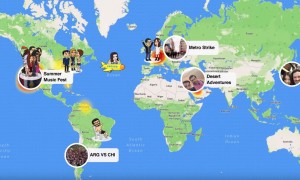哪种语言最难学?近日,有外媒以需要花费的学习时长为参照,盘点了母语为英语的语言学习者们学习不同外语的难易程度,其中汉语、日语和阿拉伯语凭借2200小时的耗时登上难度榜前三。

一起来看看榜单里提到的这些语言难在哪里吧。
2200小时:汉语、日语、阿拉伯语
在本次排名中,汉语、日语以及阿拉伯语均凭借2200小时(约合88周)的学习时长登上难度之首。
汉语
对不少外国友人来说,学好汉语不是一件易事,这其中书写、读音甚至是方言都能成为难住他们的理由。
Every Chinese word must be memorized separately as you can't guess its pronunciation from the script — but one could say the same of English if you consider plough, dough and tough.
每个中文字都需要独立记忆,因为你无法从他们的书写方式中猜出读音——不过英语也差不多,想想plough(/plaʊ/ 犁)、dough(/dəʊ/ 生面团)和tough( /tʌf/ 强硬的)这三个单词。
汉语中的四个声调也让不少外国友人感到头疼。
There are four tones in Mandarin: high pitch, rising pitch, falling low then rising and falling — and if you think that's difficult, there are nine tones in Cantonese.
普通话里有四个声调:即阴平(第一声),阳平(第二声),上声(第三声),去声(第四声)。如果这你就觉得难了,粤语中还有9个声调呢。
In Mandarin, there is a whole poem, "The Lion-Eating Poet in the Stone Den" with just the syllable "shi" repeated in various intonations.
在中文里,有一篇名为《石室诗士食狮史》(后改名为《施氏食狮史》)的诗,全篇内容仅由一个音节“shi”重复各种声调构成。
日语
日语的书写系统和其他语言相比较为复杂。汉字和平假名、片假名是主要使用的文字,称为汉字假名混写文,大多数时候都同时使用这三种文字来表记。因此,日语的一大挑战体现在书写上。
A country that's enriched the world with sushi, karaoke and manga, Japan has many devotees, especially among gamers and geeks.
作为一个用寿司、卡拉OK和漫画来丰富这个世界的国家,日本拥有许多“粉丝”,尤其是游戏玩家和电脑迷们。
But they are confronted with an extremely challenging language that uses imported Chinese characters cut off from their original meaning as well as two syllabaries — Hiragana and Katakana (you must learn when to use which).
而这些人面对的是一种极具挑战性的语言。这种语言不仅使用了剥离原本含义的汉字,还使用了平假名和片假名这两种音节文字(你需要学习在何时用何种假名)。
此外,男女用语的区别使用也常让初学者们困惑不已。
What Japanese you speak also depends on your gender. There's a "rough" language for men and a more "ladylike" language for women, but you must understand both.
日语怎么说还与你的性别有关。这里分别有一种“粗野”的男性用语和“优雅端庄”的女性用语。但这两种用语你都要理解。

阿拉伯语
阿拉伯语是除了英语和法语之外最多国家使用的官方语言。它是一种从右至左书写和阅读的语言,依照各国、各地的不同,存在各种方言。
The direction of reading and the cursive script are the two major hurdles for Arab learners.
对阿拉伯语学习者来说,阅读方向和潦草的书写是两大主要的障碍。
Classical Arabic — the language of the Quran — will make you understood everywhere, but colloquial Arabic may be more useful, because once the locals start conversing with each other, you'll lose the plot.
虽然不管在哪里,别人都能理解你所使用的古兰经上的标准阿拉伯语(或书面阿拉伯语),但更为实用的可能是阿拉伯口语。因为一旦当地人开始与彼此交谈,你可能就陷入迷茫了。
1100小时:俄语
俄语是联合国六种官方语言之一,属于印欧语系中的斯拉夫语族。如果你对俄国文学感兴趣,喜欢普希金和列夫·托尔斯泰,那学习俄语是一个不错的选择。
Hidden behind a Cyrillic veil of mystery, it's one of the harder languages to master, so much so that even many Russians speak it incorrectly.
作为一门隐藏在斯拉夫字母神秘面纱背后的语言,俄语是较难掌握的语言之一。甚至有许多俄罗斯人都会说错。
Any literature, music and ballet buff or aspiring astronaut — Russian is a mandatory subject at NASA — should study a language with over 500,000 words (some up to 38 characters long).
任何文学迷、音乐迷、芭蕾舞迷和带有雄心壮志的宇航员都应该学习这种拥有超过50万个单词的语言(有些单词的长度多达38个字符)。俄语还是美国国家航空航天局的一门必修科目。
750小时:德语
作为一门和英语同属于日耳曼语系的语言,德语的学习时间为750小时(约合30周)。虽然英语中有一些从德语中借来的词,但德语的词法和句法等却比英语复杂得多。
With nouns that are masculine, feminine and neutral, verbs that conjugate heavily and an extremely strict syntax, German may appear insurmountable to start with.
德语中的名词的阳、阴、中性,动词复杂的词形变化,以及极其严苛的语法句法可能成为很多初学者望而却步的理由。
On the other hand, pronunciation and spelling is straightforward and once you learn the — admittedly many — rules, that's it.
但从另一方面来说,德语的发音和拼写都很直接。一旦你学会了规则(规则其实不少),你就学会了。
600小时:拉丁语系
同属拉丁语系的意大利语、法语、西班牙语和葡萄牙语只需要学习者投入大约600个小时就能在口语和阅读上达到一般专业熟练(general professional proficiency)程度。
对以英语为母语的学习者来说,在这些拉丁语系当中,西班牙语和意大利语学起来最简单,紧接着是葡萄牙语,比较难的是法语。
They share many words with English, but it's that common vocabulary that creates "false friends" — words in different languages that look or sound similar, but differ significantly as meanings have drifted with time.
这些语言和英语共用许多词汇,但有时同样的词汇可能也会带来“同形异义词”。不同语言中的词汇可能看起来或听起来相似,但其意思已随着时间的推移发生了巨大的转变。
false friends:在语言学中,假如甲语言的某词与乙语言的某词书写形式相同或非常相似,但涵义不一样,足以导致误解,这对词就属于同形异义词。源自法语faux-ami,意为“假朋友”。







